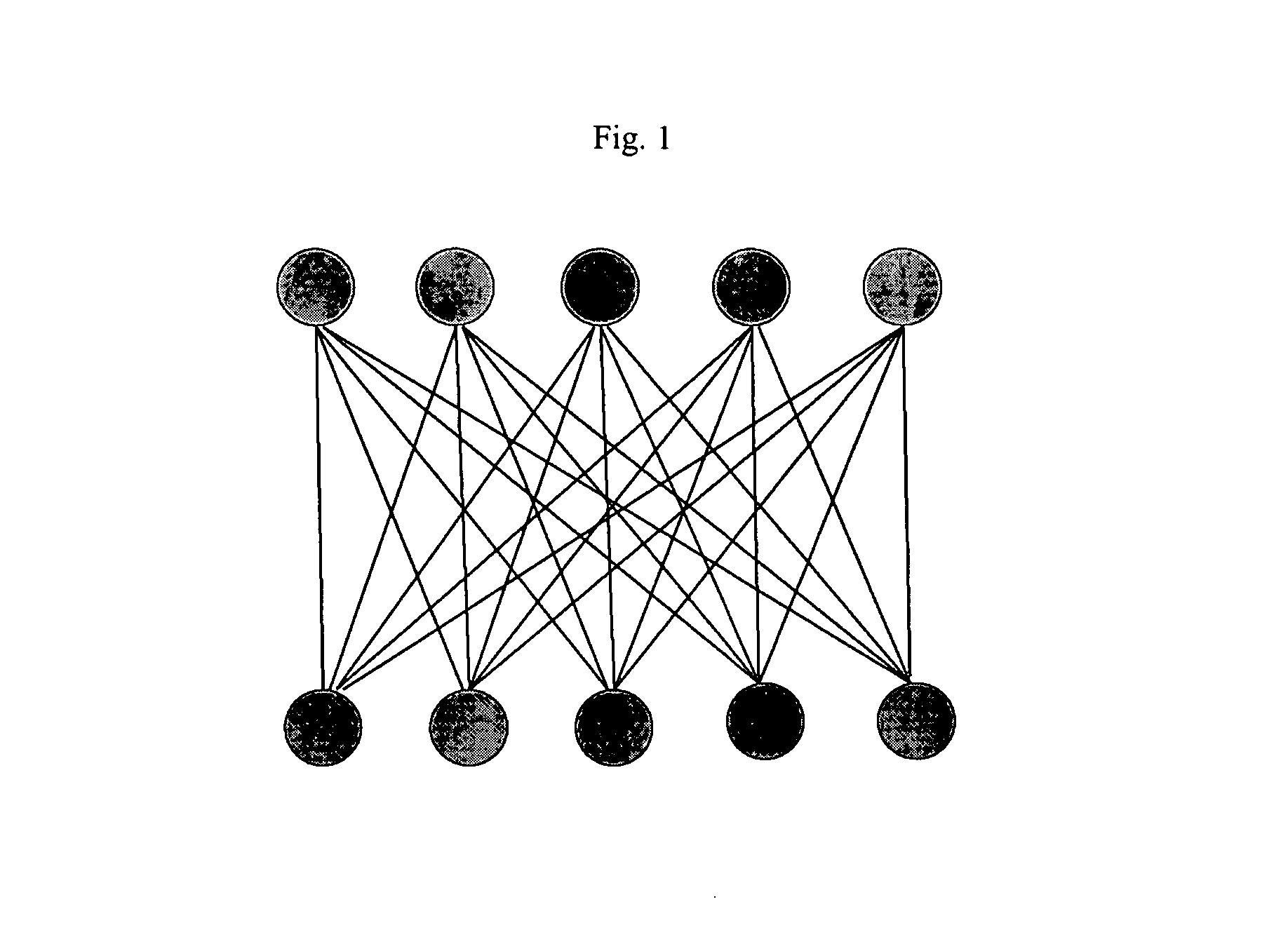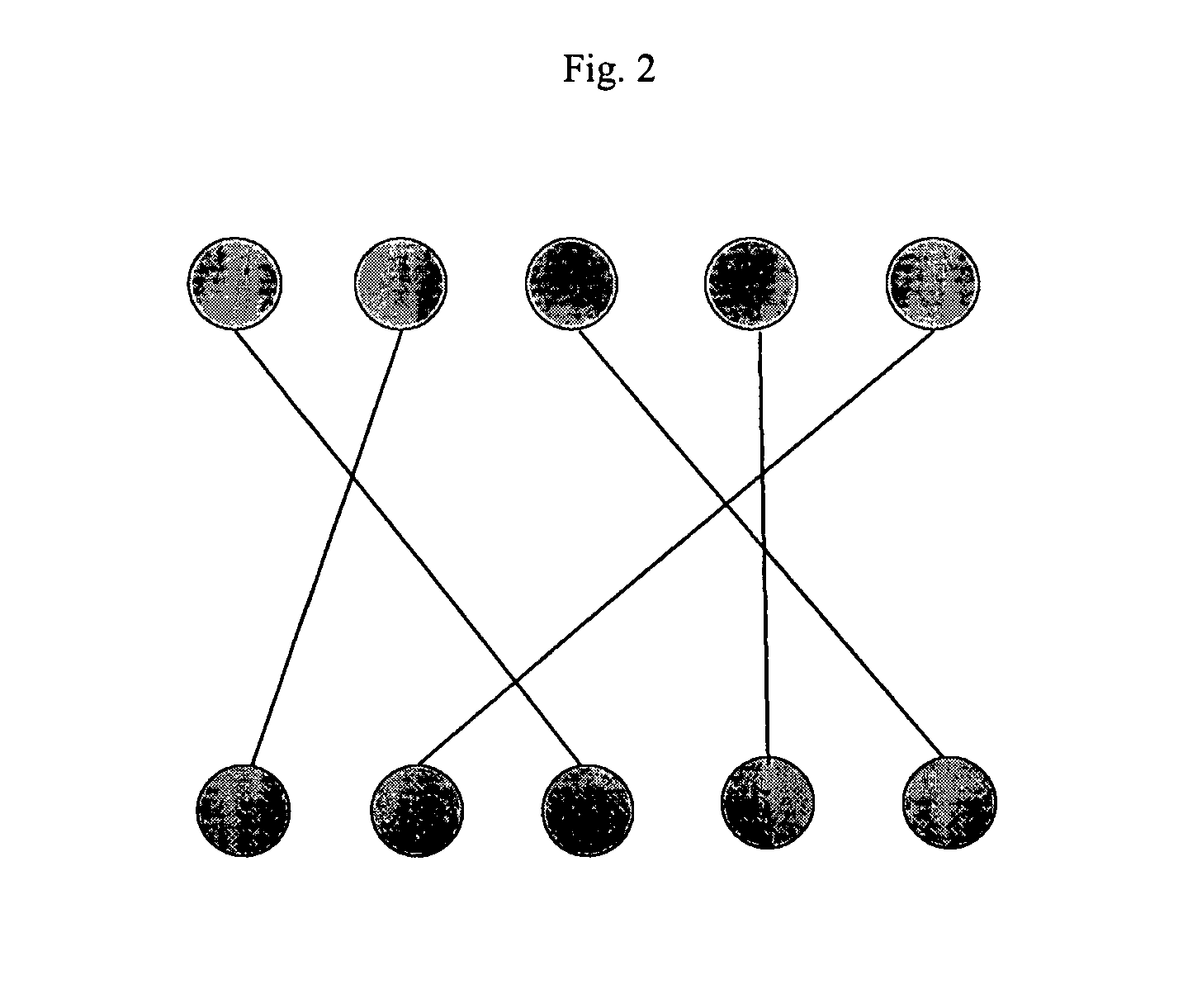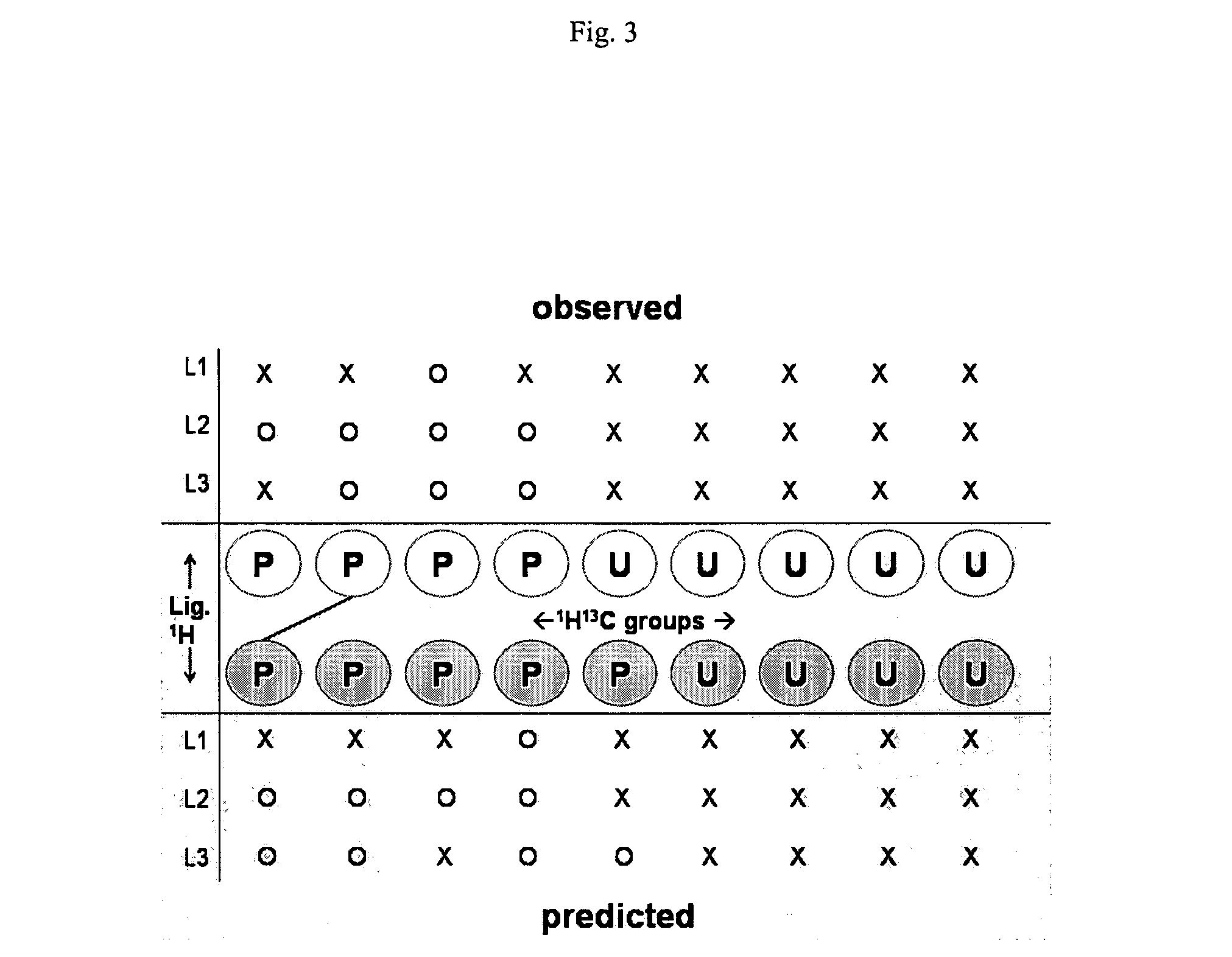[0112]Having provided a general overview of the present invention, a description of a particular embodiment of the invention is presented. As described herein, in one embodiment, the present invention comprises a method of determining a preferred binding
pose of a ligand in a complex comprising a
target protein and a ligand of interest using non-scalar magnetic couplings. An
advantage of the present invention is that the invention does not require the assignment of NMR peaks that arise from protein nuclei. This ability allows intermolecular protein-ligand non-scalar couplings to be used for ligand binding
pose determination much more completely and rapidly than is now possible. The present invention also facilitates
in silico efforts to optimize the protein-
binding properties ligands. It is noted that the following description of an embodiment of the invention is presented in a particular order of steps, but this is purely for purposes of explanation. Unless explicitly or implicitly indicated otherwise, the steps need not be followed in the order presented below; rather, the order of steps can be adapted to suit a particular application of the invention.
[0113]It is noted that spectrum acquisition and
processing in all embodiments of the present invention can be carried out using commercially-available NMR hardware and
software packages, the identities which will be known to those of ordinary skill in the art and may be in addition to those materials described herein. There is no requirement that the method employ a
magnet of any particular
field strength, although it is generally preferable to employ a
high field. Similarly, there is no requirement on the
software package used to control acquisition or
processing of acquired data. Some examples of hardware and
software packages that can be employed in the present invention are presented herein.
[0114]In one embodiment of the present invention, the NMR
resonance shifts of a ligand of interest are assigned first. Although the present invention eliminates the need to assign
specific protein resonances, the ligand's resonances should be assigned. Unlike assigning protein resonance, however, it is often a relatively straightforward procedure to assign the resonances of a
small molecule bound to a protein, or exchanging between free and bound states. An NMR spectrum of the ligand can be acquired using standard NMR techniques and the assignments of the peaks can be made either manually or employing appropriate software, as described herein. In some cases, ligand resonances can be assigned using a one-dimensional NMR experiment; however, in general it may be desirable to employ a two-dimensional
isotope-filtered NMR experiments to assign resonances, in which case 2D F1 / F2-13C / 15N-filtered HSQC-NOESY, TOCSY and / or COSY spectra can be acquired. Alternatively, bound or exchanging ligand resonances can be assigned by recording standard 2D 1H-1H through-bond and through-space correlation spectra utilizing a sample in which the protein is fully 2H-labeled.
[0115]An observed NMR peak pattern comprising the
target protein resonances and ligand resonances can then be acquired. The observed peak pattern indicates non-scalar couplings between the nuclei of a sample comprising a
target protein and a ligand. The observed NMR peak pattern can comprise experimentally-determined data, or (for
algorithm testing purposes) it can comprise non-experimentally determined data (e.g., for
algorithm testing purposes). One NMR experiment that can be employed to acquire experimentally-determined data is a three-dimensional 13C-edited, 15N / 13C-filtered HSQC-NOESY experiment. For example, estimates (of varying degrees of accuracy) can be obtained for the predicted values of the target protein resonances in a variety of different ways. In one embodiment, the target protein resonances are obtained by estimating target protein resonance shifts from pre-existing data, such as those available in the BMRB, or from previously assigned protein-ligand complexes with similarity to the complex under study. Alternatively, the target protein resonance shifts can be predicted
in silico. These options for acquiring target protein resonances can be employed in conjunction with, or in exclusion to, experimentally determining target protein resonance shifts. The observed NMR peak pattern will feature contributions from both the target protein and the ligand. In this regard, some or all of the ligand
population is bound to the target protein; this association with the protein can be in either a fast-exchanging or slow-exchanging equilibrium.
[0116]In one aspect of the present invention, rather than mapping individual predicted peaks to individual observed peaks, the present invention produces a mapping between 1H13C groups predicted to be involved in intermolecular NOEs with 1H13C groups observed to be involved in intermolecular NOEs. This procedure greatly reduces the size of the mapping problem; furthermore; it insures that the predicted mappings, and hence predicted peak-atom assignments, are
self consistent; i.e., observed peaks with different protein chemical shifts cannot be mapped to the same protein 1H13C group predicted by a given pose, since such peaks are placed in different experimentally observed 1H13C groups, and must be mapped to different predicted 1H13C groups. If peak-to-peak mapping were employed, such inconsistencies could arise.
[0117]As with all spectra acquired in the course of practicing the present invention, the spectrum can be acquired using standard NMR pulse sequences and methodologies. It is noted that for purposes of the present invention, “non-scalar couplings between nuclei” include any and all couplings arising from through-space, as opposed to scalar “through-bond,” transfer of
magnetism, although scalar connectivities can be employed in a filtering role.
 Login to View More
Login to View More  Login to View More
Login to View More 


